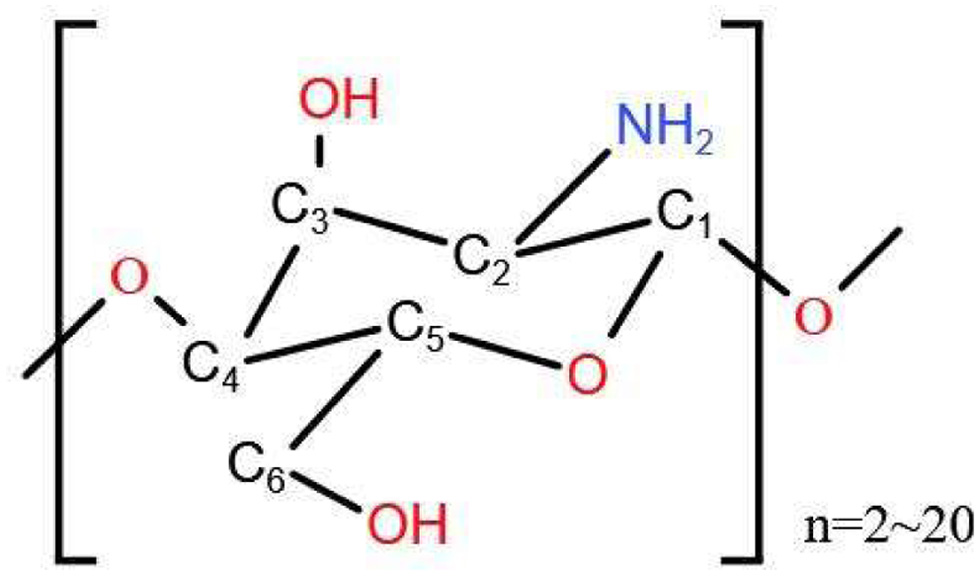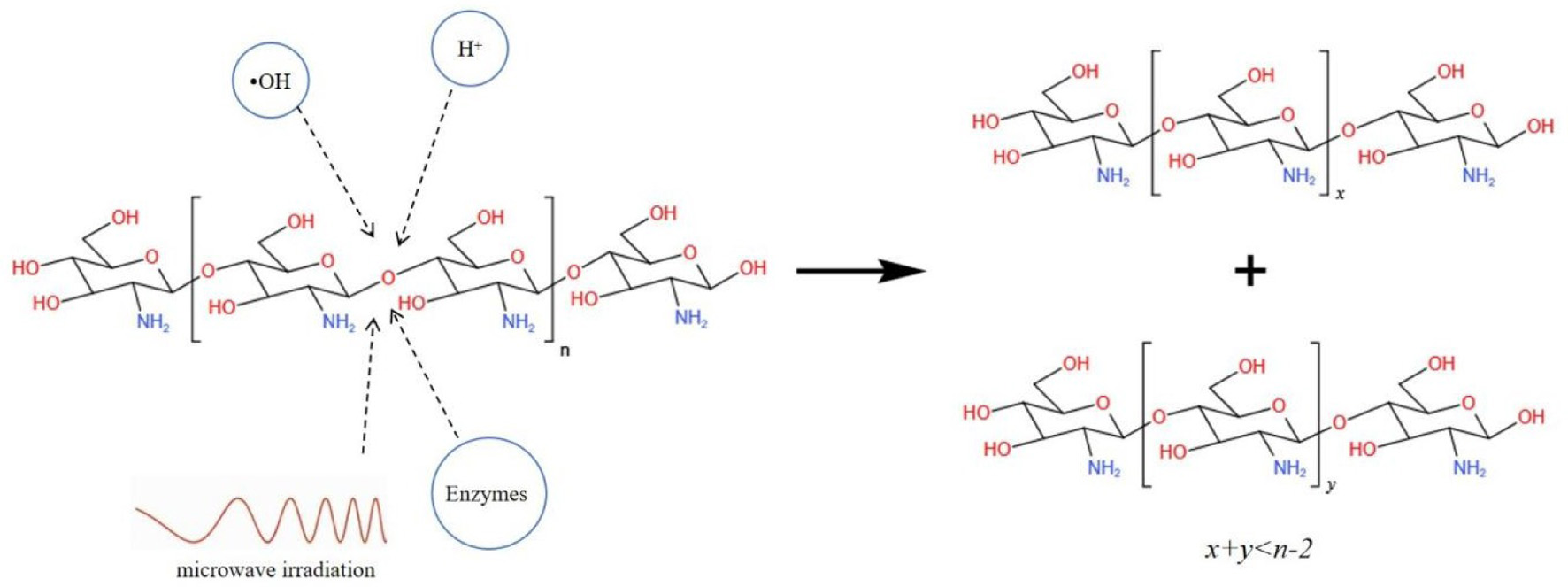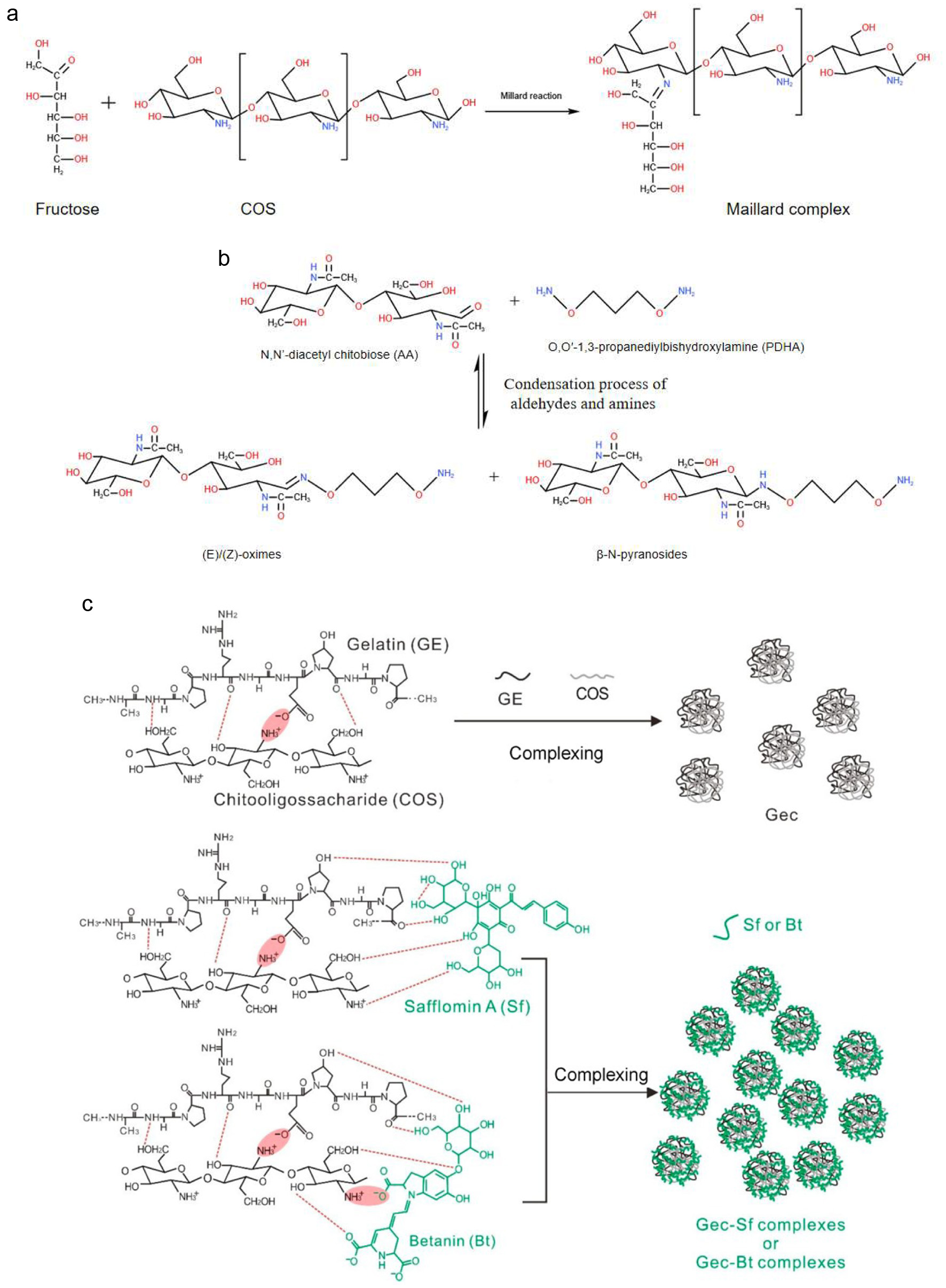
Figure 1. Structure of chitooligosaccharides.
| Journal of Food Bioactives, ISSN 2637-8752 print, 2637-8779 online |
| Journal website www.isnff-jfb.com |
Review
Volume 29, March 2025, pages 20-28
Structure characteristics related to biological properties and application of chitooligosaccharides: Mini-Review
Figures



Tables
| Preparative methods | Specific techniques | Advantages | Limitations | References |
|---|---|---|---|---|
| Chemical methods | Acid hydrolysis | Low cost, fast reaction, scalable production | Broad molecular weight distribution, environmental pollution, potential structural damage | Einbu et al., 2007; Li et al., 2013 |
| Oxidative degradation | Mild conditions, controllable degradation | Requires strict oxidant control, may generate byproducts | Nguyen et al., 2023 | |
| Enzymatic methods | Specific enzymes | Water barrier properties and antioxidant activity | High enzyme cost, slow reaction rate | Hellmann et al., 2025; Shinya and Fukamizo, 2017 |
| Non-specific enzymes | Mild conditions, uniform product, eco-friendly | Low efficiency, byproduct formation | Beer et al., 2020; Poshina et al., 2020 | |
| Other methods | Physical methods (ultrasound, microwave-assisted etc.) | Eco-friendly, can be combined with other methods for higher efficiency | Limited effectiveness alone, requires parameter optimization | Li et al., 2023; Suhaimi et al., 2025; Wasikiewicz and Yeates, 2013; Yue et al., 2008 |
| Compound | Application | Conclusion | Reference |
|---|---|---|---|
| Yeast protein | Betanin embedding | Enhanced thermal-, light-, and metal irons (ferric and copper ions) -stabilities of betanin, protected the betanin against color fading, and realized a controlled release in simulated gastrointestinal tract. | Yang et al., 2024 |
| Desalted duck egg white peptides (DPs) | Calcium delivery systems | These copolymers reversed the inhibition of phytic acid (PA) in calcium transport in Caco-2 cell monolayers. PA-induced calcium deficiency mice model indicated that copolymers could reverse the side effect of PA, promote calcium bioavailability, and improve gut health. | Zhao et al., 2020 |
| Tripolyphosphate (TPP) | CPP-Ca (calciumbinding casein phosphopeptides) loaded core-shell microparticles | COS was successfully crosslinked through TPP while CPP-Ca was incorporated in it, and the calcium release and absorption studies in vitro and in vivo exhibited CPP-Ca-loaded microparticles could achieve controlled calcium release and sustained calcium uptake. | Zhu et al., 2020 |
| Bacterial cellulose | Packaging | The composite film has good mechanical properties, COS improved the antibacterial and antioxidant properties | Yin et al., 2020 |
| Pectin/Ca2+ | Quercetin embedding | The drug release profile of COS-CaP-QT was pH-dependent and colon microenvironment-responsive, and COS-CaP-QT showed preferential distribution in the colon | Jing et al., 2023 |
| Fish skin gelatin | Food packaging | The inclusion of COS significantly augmented the antibacterial and antioxidant properties of the hydrogel-based nanofiber membranes. | Liu et al., 2024 |
| Marsupenaeus japonicus ferritin | Pickering emulsions | Emulsions stabilized by MF/COS complex at a ratio of 2:1 exhibited superior stability, evidenced by no significant creaming or demulsification during storage or heat treatment. | Gao et al., 2024 |
| Gelatin | Safflomin/betanin embedding | Intermolecular interactions and good compatibility among gelatin, chitooligosaccharide and proper-content Safflomin/betanin promoted thethermal stability, dispersion stability and microgel particles of complexes. The complexes illustrated great oil-water interfacial adsorption behaviors and dilatational viscoelasticity for interfacial membrane, implying high elasticity and interface stability. | Wang et al., 2023 |
| Bovine serum albumin | Improving the foaming capacity | The COS-BSA complexes have good foaming properties than BSA. The angel cake with the COS-BSA substitution rate of 25% exhibited the largest specific volume and best texture, and inhibited the microbial growth in cakes during storage. | Zhao et al., 2022 |
| Sodium alginate/Ca2+ | Adsorbing metal ions | The novel EDTA functionalized chitooligosaccharide/sodium alginate/Ca2+ physical double network hydrogel (ECSDNH) can effectively adsorb metal ions and be recycled | Yue et al., 2022 |
| Poly(c-glutamic acid)/dopamine | Self-healing and tissue adhesive biomaterials | Through reversible ionic and p-cation interactions between the anionic c-PGA/DA conjugate and cationic COS, a physically crosslinked hydrogel was stably formed by simply mixing an aqueous solution of the c-PGA/DA conjugate with COS. The physically crosslinked c-PGA/DA/COS hydrogels exhibited excellent self-healing properties and injectability | Cheol Kim et al., 2021 |
| Whey protein isolate-bitter melon seed oil emulsions | Loading bitter melon seed oil | With the addition of COS, the ζ-potential of the emulsion shifted from negative to positive because COS adsorb onto the surface of W-BSOE droplets. And the in vitro gastrointestinal digestion indicated that WC-BSOE droplets can release bioactive compounds that effectively treated intestinal inflammation. | Ma et al., 2024 |
| Ovomucin | Loading and enhancing activities of Lutein | LUT-loaded nanogel (OVM-COS-LUT) was prepared by a self-assembly of ovomucin (OVM) and chitosan oligosaccharide (COS) to enhance the effective protection and bioavailability of LUT. The nanogel had excellent dispersion (PDI = 0.25) and an 89.96% LUT encapsulation rate. | Xu et al., 2024 |
| Lysine (Lys) and glycine (Gly) | To further strengthen the antioxidant capacity of COS | Chitooligosaccharide (COS) combined with lysine or glycine via the Maillard reaction significantly enhances antioxidant activity, effectively preserving the quality and extending the shelf life of fresh-cut fruits and fruit juices during storage. | Yan et al., 2018; Yu et al., 2019 |